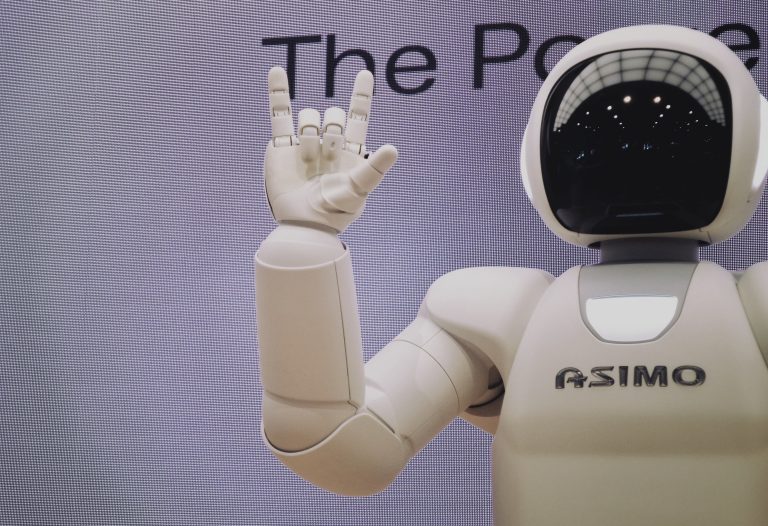Published on: March 29, 2023 Updated on: February 6, 2024
AI vs. VI: What Are They And How Do They Differ
Author: Daniel Coombes

We have all heard of Artificial Intelligence (AI). In 2023, we are bombarded with continuous media about AI, from futuristic science fiction blockbusters to numerous headlines from around the world.
Our evident fascination and fear of this human-level AI, known as Artificial General Intelligence (AGI), means that about 64% of consumers believe that they have a ‘good understanding’ of this new technology.
However, a recent study may have found this to be false. When asked about their contact with Artificial Technology, 34% claimed to have had none, while 32% were unsure. The researchers later found that about 50% of these individuals had indeed been in contact with AI without realizing it.
The understanding of Virtual Intelligence (VI) seems to be even less commonplace. A Google search of this term reveals around 549,000,000 results, but only a measly few actually relate to the topic, with most focusing on AI tech instead.
We want to change this. With both AI and VI leading the technological charge, it seems essential to be able to differentiate between these two incredible advancements in tech. So, sit back as we take a ring-side seat for the battle of the century, Artificial Intelligence vs Virtual Intelligence.
Defining artificial intelligence vs. virtual intelligence
When Virtual Reality (VR) became a more prominent technology among consumers who were desperate to strap on a headset and explore virtual environments, there was initial confusion surrounding the differences between it and Augmented Reality (AR). Similar uncertainty is occurring with the differences between Artificial Intelligence and Virtual Intelligence.
At first glance, VI systems and AI systems seem remarkably similar. Both utilize complex algorithms which mimic human intelligence to tackle specific tasks. However, this is where the similarities end. So, let’s definitively define these two emerging advancements in computer science.
What is artificial intelligence?
Shukla Shubhendu and Jaiswal Vijay define AI as:
“Machines that respond to stimulation consistent with traditional responses from humans, given the human capacity for contemplation, judgment, and intention”
The goal of Artificial Intelligence is to create machines that can imitate intelligent human behavior, including effectively identifying patterns, making real-time decisions, and interpreting speech. Whereas the average VI system will typically require human intelligence.
This is done via deep-learning neural networks that analyze massive data sets, called big data, which enables machines to learn, problem-solve, react, and ultimately think without human input. This is a continuous process which has no boundaries or limits, which means AI can continuously learn and adapt to new data.
Let us take a look below at a few of the incredible current applications of AI:
- Chatbots: With the launch of ChatGPT, chatbots seem to be the latest buzzword in almost every industry. These fantastic natural language processing bots act as conversational agents that simulate conversation with a real-life human. The bank Klarna had a traditional chat channel that had a mere 20% service volume, but when the AI-driven Freshchat was introduced, this climbed to 66%.
- Healthcare: The immense potential for AI to save lives is truly incredible. The American Cancer Society states that 1 in 2 healthy women are provided with false-positive mammograms. Now, AI is being used to analyze mammograms 30 times faster with a 99% accuracy rate, thus removing the need for unnecessary biopsies.
- Cybersecurity: With the constant creation of new malware and ransomware, the face of cyber threats is forever changing. Traditional cybersecurity is unable to handle this influx of new threats; however, AI can read immense amounts of relevant data to detect the latest harmful trends.
- Self-driving cars: The future of transport is AI-driven, quite literally. AI technology can monitor data from sensors, cameras, and radar to travel between destinations without the need for a human driver. This remarkable tech will be able to react to sudden obstacles, traffic, and weather conditions in real time, allowing passengers to feel safe and secure in the digital hands of AI.
- Retail: Have you ever wondered why your Amazon homepage seems to be tailored towards you? Almost every major retailer in the world is trying to make your shopping experience personalized, and this involves the implementation of AI. AI is tasked with learning about your interests, hobbies, and shopping habits to craft a truly personalized experience.
What is virtual intelligence?
Have you ever heard of Virtual Intelligence? Most likely not, but shockingly you have most definitely used it. Don’t believe us; take a look at the below examples of VI.
- Virtual Assistants such as Alexa, Siri, Cortana, and Google Assistant
- Fitness trackers such as Fitbit, Garmin, and Oura ring
- Navigation apps such as Google Maps, Waze, and Apple Maps
Evidently, most of us have used VI tech in some capacity in our everyday life, but what exactly is it?
Well, VI is the culmination of both artificial intelligence and the virtual world. It is an AI that is contained within a controlled environment and responds to predetermined factors without the freedom of machine learning.
For instance, if we ask Amazon’s Alexa to tell us a joke, she will undoubtedly reel off a hilarious one-liner. However, she is no comedian; she cannot think of this material herself. These jokes were pre-programmed and are limited. Eventually, we would cycle through her repertoire within the controlled environment until we started hearing the same punchlines again and again.
In stark contrast, the self-aware nature of AI can write its own comedic material through decision-making and machine learning. This is evidenced by an episode of the infamous animated show South Park titled ‘Deep Learning’, which was co-written by CHATGPT.
To summarize, VI is pre-programmed software that attempts to create the illusion of decision-making. However, the actual intelligence of VI is preset and can not evolve past the confines of its virtual environment.
Let us take a brief look at some of the most interesting use cases of Virtual Intelligence around:
- Crime prediction: Do you remember Steven Spielberg’s 2002 blockbuster Minority Report? The film was set in 2054, where complex algorithms could predict future violent crimes. Virtual Intelligence is on the verge of making that fantasy a reality by analyzing data, including social media feeds, websites, forums, and blogs, to identify patterns to foresee criminal activity.
- Security: In the future, cyber security will become a threat of the past with VI tech. Once an attack is detected, Virtual Intelligence will be able to follow a pre-programmed workflow that can minimize the damage by isolating or exterminating the threat.
- Medical simulation: Oxford Medical Simulation (OMS) utilizes both Virtual Reality software and Virtual Intelligence to help practicing medical staff approach different real-life situations involving AI patients. Check out this extraordinary video for more details.
- Bomb disposal robots: It is safe to say that this occupation comes with certain dangers. And that is why VI-infused training simulators have been developed to minimize the associated costs and hazards.
SecondChina: A team from the University of Florida developed SecondChina, a virtual environment designed to replicate a Chinese city. In this virtual world, government officials could familiarize themselves with China’s culture, etiquette and attitudes before even visiting.
And the winner is…
The results are in from the ultimate showdown, Artificial Intelligence vs Virtual Intelligence. And while it was a close match, we have to declare AI as the obvious victor. AI is truly the future of technology with its real-world applications, unlimited learning capabilities, data analysis, and the ability to mimic human behavior.
Does this mean the end of Virtual Intelligence? We doubt it; we envision a harmonious future where both techs will coexist. After all, most companies will not require next-level AI advancements to function effectively. VI offers these smaller businesses a cheaper and more accessible alternative.
But remember, none of this is possible without human intelligence!
Now that we have defined VI and AI, what will you implement to better your business in the future? Head to our directory filled with the greatest VI and AI apps now to find the tool guaranteed to revolutionize your company.
Daniel Coombes
Daniel is a talented writer from the UK, specializing in the world of technology and mobile applications. With a keen eye for detail and a passion for staying up-to-date with the latest trends in the industry, he is a valuable contributor to TopApps.ai.
Recent Articles

Learn how to use advanced search tools, newsletters, and reviews to uncover the perfect AI-focused podcast for you.
Read More
Explore the top beginner-friendly AI podcasts. Our guide helps non-techies dive into AI with easy-to-understand, engaging content. AI expertise starts here!
Read More
Explore the features of The AI Podcast and other noteworthy recommendations to kick your AI learning journey up a notch. AI podcasts won’t...
Read More